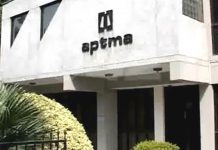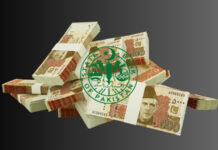The government reported a fiscal surplus of 1.6% of GDP for the first quarter of the current fiscal year, supported by record profits from the State Bank of Pakistan (SBP), a 30% surge in petroleum levy collection, and robust provincial cash surpluses. However, the surplus was slightly lower than the 1.7% recorded in the same period last year, according to a news report.
The Ministry of Finance’s fiscal operations report for July-September 2025 indicates that the government recorded a budget surplus of Rs2.12 trillion, a 10% increase from Rs1.896 trillion in the same period last year. Despite this, the surplus as a percentage of GDP decreased slightly, from 1.7% to 1.6%.
The primary balance, which reflects the difference between total revenues and expenditures excluding interest payments, stood at 2.7% of GDP, down from 2.8% the previous year. However, the primary surplus in absolute terms grew by 8.4%, reaching Rs3.497 trillion, up from Rs3.2 trillion in the same period last year.
Despite the headline surplus, the report highlighted challenges in revenue generation and expenditure control. Total revenues rose by just 6% to Rs6.2 trillion, equivalent to 4.8% of GDP, compared to 5.1% a year earlier. Tax revenues remained flat at 2.4% of GDP, while non-tax revenues fell to 2.4% from 2.7% last year. However, total tax receipts saw a 12% increase, reaching Rs3.15 trillion compared to Rs2.77 trillion in FY2023-24.
The Federal Board of Revenue (FBR) collected Rs2.884 trillion, up 11% from Rs2.563 trillion a year earlier, but its share of GDP remained unchanged at 2.2%. The four provincial governments collectively mobilized Rs270 billion in tax revenues, marking a 21% increase from Rs213 billion last year. Additionally, provincial cash surpluses more than doubled, rising by 54% to Rs781 billion from Rs360 billion in the same period last year.
Expenditure for the first quarter increased by 3.6%, reaching Rs4.08 trillion, compared to Rs3.93 trillion last year. As a percentage of GDP, spending edged down to 3.1% from 3.4%. Current expenditure grew by 12.6%, reaching Rs4.07 trillion, but remained stable at 3.1% of GDP. Markup payments increased by 5%, totaling Rs1.378 trillion, consistent with 1.1% of GDP.
Defense spending rose by 8.4% to Rs447.5 billion, but its share of GDP declined slightly to 0.3% from 0.4%.
A significant portion of federal non-tax revenue, Rs2.43 trillion, came from SBP profits, driven by the high 22% policy rate. However, income from state-owned enterprises fell by 35% to about Rs40 billion, down from Rs62 billion last year.
The report also pointed out that the rise in provincial surpluses was partly due to slower or last-minute fund releases from the central government. Punjab recorded a record surplus of Rs442 billion, a tenfold increase from Rs40 billion last year, while Sindh’s surplus grew by 37% to Rs209 billion. However, Khyber Pakhtunkhwa and Balochistan saw a decline in surpluses, with Khyber Pakhtunkhwa’s falling by 35% to Rs77 billion, and Balochistan’s decreasing by over 57% to Rs54 billion.
























